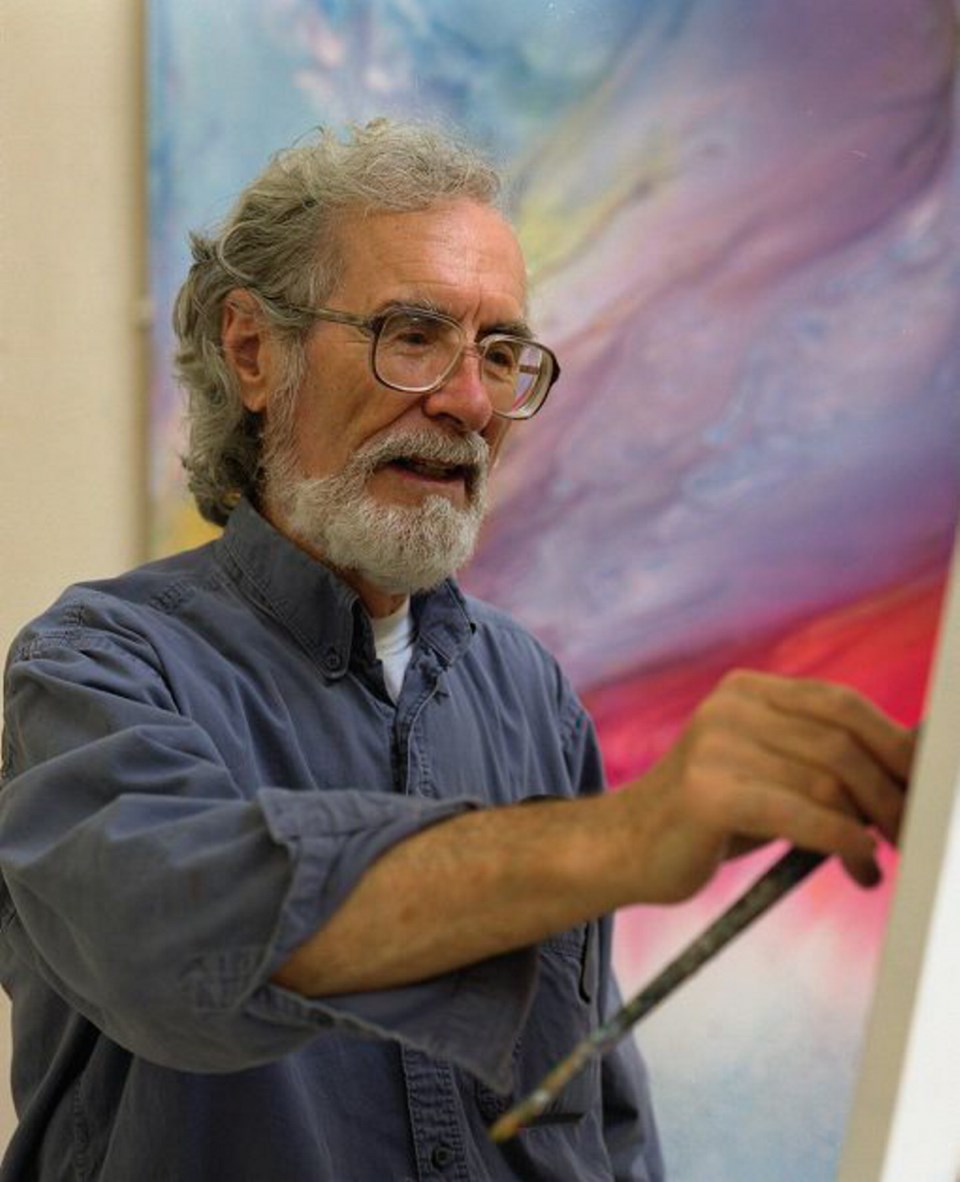As temperatures settle into the deep negatives in Edmonton and flower blossoms become the stuff of memory, a 6,500-square-foot mural by a late Victoria artist brings a burst of colour to the students at the University of Alberta.
U of A art collection curator Jim Corrigan described the effect of the work by artist Norman Yates.
“As you can imagine, at this time of year it’s about 20 below,” Corrigan said. “There’s a beautiful sunny sky, but it’s cold. There’s no green grass,” he said. “So it’s this blast of colour at the centre of campus, which I think people really stop to look at. It makes a difference at this time of year.”
West and North, which Yates painted on 202 four-by-eight-foot plywood planks, remains part of his legacy. Yates died Feb. 9 in Victoria at age 90.
Yates was born in Calgary in 1923. He worked as a radio technician during the Second World War and graduated from the Ontario College of Art in 1950. He taught at the University of Alberta for 33 years before moving to Victoria in 1987 with his wife, Whynona.
The Canadian Artists’ Representation / Le Front des Artistes Canadiens (CARFAC) honoured Yates with a lifetime achievement award in 2003.
“He was quite insightful,” said Corrigan, who met Yates as a grad student at the U of A and got to know him after joining the university’s collections staff. “I think he’d seen a lot, learned a lot and experienced a lot right from his childhood on the Prairies until his final days.”
Corrigan described a unique style of Yates’s, which he called “landspace.” It’s a different way of painting landscapes, which have been a prominent part of Canadian visual culture, from the Group of Seven and beyond.
“I think he was able to look at the land in a new way,” Corrigan said. “His idea of “landspace” was the notion that what you saw on the canvas could be the idea of the whole space, not just what you saw in front of you. I think he was able to work that and develop it into a signature.”
Victoria artist Pat Martin Bates met Yates in 1959 when she worked at Canadian Art magazine and Yates was organizing a Commonwealth exhibition in Wales. They were reacquainted when she moved to Alberta and they exhibited together in Canada’s first artist-run centre at the U of A. She said she was delighted when he and Whynona retired to Vancouver Island.
“This was a very joyous occasion for us all here, to have Norman in our midst,” she said.
Bates called Yates a gentle man who would be remembered as a marvelous teacher.
“But mostly I think it’s his generosity of spirit with all the other artists [that will be remembered],” she said. “That’s how I think of him, as having this great, generous heart. And the very quiet joy he seemed to bring with him in his art.”
She called it a “terrible blow” to Yates when Whynona died, not long after they moved to the Island.
Former gallery owner Fran Willis hosted Yates’s works in Victoria. She said he made a good fit for her Store Street gallery because of the way his large works filled the space.
“He loved painting big. He’d see a big wall and he’d want to fill it,” Willis said.
The last show she hosted before closing the gallery was of Yates’s work. She said he continued mentoring artists even after retiring from teaching.
“Although his focus was always so much on the studio, he was still very much a teacher always,” she said.
“He was always a mentor for young artists and he really believed in the art community members supporting each other. He would come to every opening I had and was interested in talking to any other artist.”
She said Yates continued to paint landspaces but his work changed after moving to the Island, moving beyond a focus on minimalistic openness.
“When he moved here, I suppose with the influence of the ocean, it became more about space and movement and colour.”
Yates is survived by his children Anthony and Janice; grandchildren Erin, David, Whynona and Janine; great-grandchildren Niko and Tyson; and extended family in other parts of Canada, and England.
